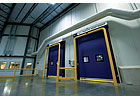
Leaders lead by example. So it’s not surprising that top temperature-controlled food processors, distributors and warehouse operators are considering the utmost in sustainable, green practices.
Many are examining how to apply Leadership in Energy & Environmental Design (LEED) performance standards in their facilities. The U.S. Green Building Council (USGBC) established LEED in 1998 and it has evolved into a third-party certification program. It also is a national benchmark to evaluate the design, construction and operation of high-performance green buildings and communities.
The USGBC established the Green Building Certification Institute (GBCI) to administer the process. This holistic approach to LEED certification can validate a project’s green features. These include proof that the facility minimizes its environmental footprint, reduces operating costs and improves the health and productivity of occupants.
Is LEED right for your temperature-controlled business? Let’s examine the issue.
LEED has diversified to offer rating systems to address the unique characteristics of several building sectors, including retail, schools, healthcare and homes. Although the food industry has welcomed LEED-certified frozen food operations (a Lamb-Weston sweet potato plant was the first platinum-certified facility), USGBC has not released LEED certification guidelines for refrigerated warehouses.
ESI Group USA (ESI), Hartland, Wis., is on track to complete one of the industry’s first Silver LEED-certified multi-temp warehouses (dry, refrigerated and frozen storage).
This Texas project will require a GBCI to issue a credit interpretation ruling to exempt the project from meeting minimum ASHRAE ventilation rates, which are a prerequisite for LEED certification, but would have a negative performance impact in a refrigerated warehouse.
This new foodservice distribution center spans 291,391 square feet with -20
